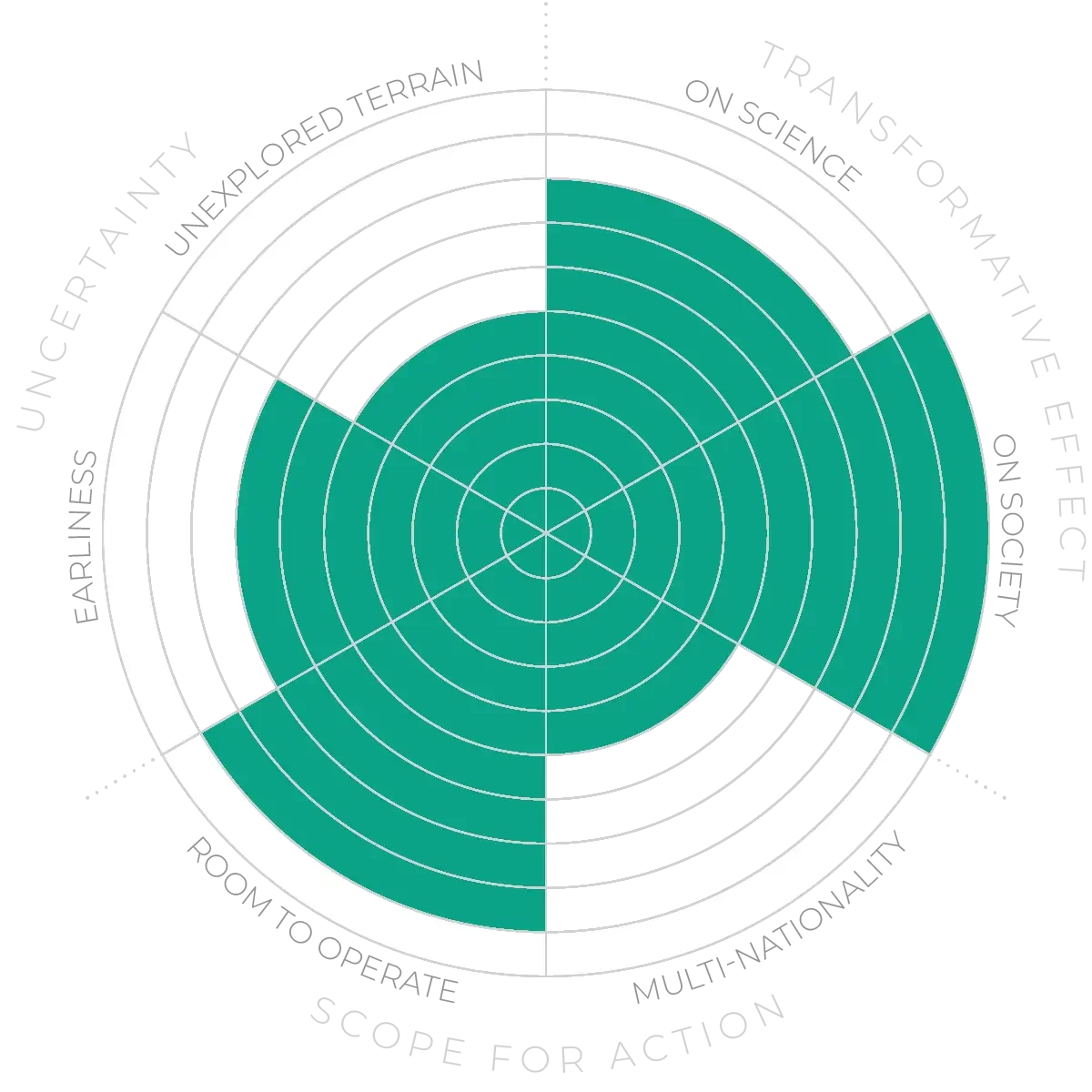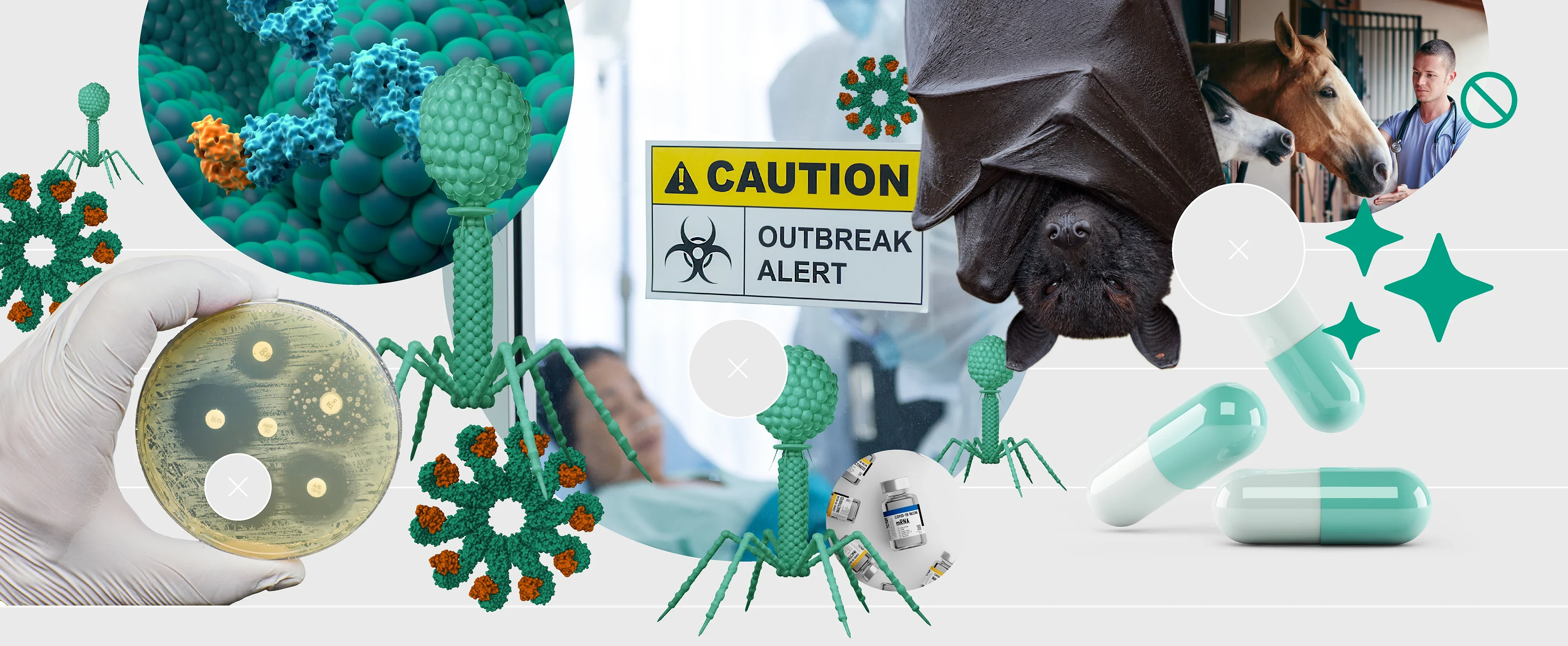Future Horizons:
10-yearhorizon
Novel tools create research opportunities
25-yearhorizon
Generalised vaccines bring therapeutic advances
Some new therapeutics have already found widespread use. mRNA vaccines were deployed in vast numbers against covid-19, after decades in development hell. So were monoclonal antibodies. Gene editing for inherited diseases is also increasingly mainstream.
Other promising approaches remain largely untapped. One such example is phage therapy — using viruses called bacteriophages to treat bacterial infections.27 Phage therapy could be used to treat antimicrobial-resistant bacteria, saving many lives.28 A key challenge is to better characterise the interactions between the viruses and their bacterial hosts,29 which will help ensure that the chosen phages actually destroy their target organism.30
A second avenue of attack is to hamper the evolution of antimicrobial resistance, ensuring that antibiotics remain useful for longer. This requires an improved understanding of bacterial evolution.31 Key challenges include predicting the behaviour of mobile genetic elements32 and improving our understanding of how drug treatments trigger the evolution of resistance.33,34
Techniques such as cryogenic electron microscopy and AI are enabling rapid progress in our understanding of molecular interactions such as protein-protein interactions.35 This promises a multitude of new therapeutic targets that could be targeted rapidly using the tools of synthetic biology. Existing drugs could also be repurposed.36
Finally, the rapid emergence of new pathogens is spurring attempts to develop broad-spectrum treatments such as a pan-coronavirus vaccine.37 Multiple methods are being pursued: for instance, it may be possible to develop a “universal antibody vaccine” based on monoclonal antibodies.38
Emerging opportunities for intervention - Anticipation Scores
The Anticipation Potential of a research field is determined by the capacity for impactful action in the present, considering possible future transformative breakthroughs in a field over a 25-year outlook. A field with a high Anticipation Potential, therefore, combines the potential range of future transformative possibilities engendered by a research area with a wide field of opportunities for action in the present. We asked researchers in the field to anticipate:
- The uncertainty related to future science breakthroughs in the field
- The transformative effect anticipated breakthroughs may have on research and society
- The scope for action in the present in relation to anticipated breakthroughs.
This chart represents a summary of their responses to each of these elements, which when combined, provide the Anticipation Potential for the topic. See methodology for more information.



